Mega Clown Pleco (scientifically known as Hypancistrus sp. (L340)) is an interesting freshwater fish that is kept and bred by many aquarium owners. They are attractive-looking small pleco fish that are very peaceful. They don’t have complex care requirements and can easily live in any aquarium setup. Their size makes them a preferred pleco choice for small aquarium.
The L340 Pleco will need specific tank conditions to thrive and happily live for many years. This article will guide you through everything you need to know about the Mega Clown Pleco. We cover care, growth rate, lifespan, breeding, size, diet, and more!
Species Profile & Overview
The Mega Clown Pleco ( L340 Pleco ) is, by far, one of the most beautiful members of the Loricariidae family (plecos) native to the middle Orinoco River in Colombia. These dwarf plecos share the same body shape and pattern as the L333 plecos but are much smaller in size.
Their boney back and unique markings are specially adapted to the region they live in which helps them to protect themselves from other fish. They are mainly black and white in color and have a cylinder-shaped body.
This fish lives in rivers and streams filled with driftwood, rocks, and fallen trees that play an important role in their habitat. They use these fallen wood and rock to hide under, eat, breed and raise their fry. Mega Clown Pleco are constantly forging in the water for a perfect hiding spot that will also provide them with enough food to eat.
They are very peaceful and will live at the bottom of the tank without caring what’s going on above in the water column. They will also eat any food leftover that other fish might miss, which makes them a great cleaning crew.
Appearance:
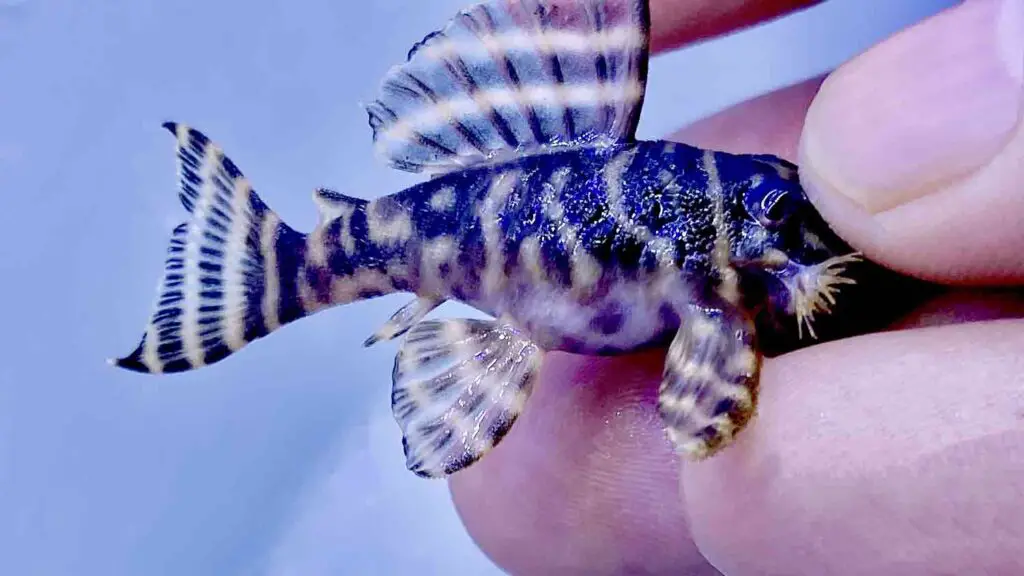
Mega Clown Pleco are beautiful freshwater creatures from the Loricariidae family (plecos). Like all other fish in this family, they have armored backs but soft bellies.
They do not have scales and are covered with tough bone plates on their back that act as scales. Unlike their back, they have a soft belly that has thin and fragile skin.
Fins are probably one of the main beauty factors these fish have. The large triangular dorsal fin is the main attraction point of this fish. When they are not under stress, you might see the dorsal fin stand upright displaying its unique patterns.
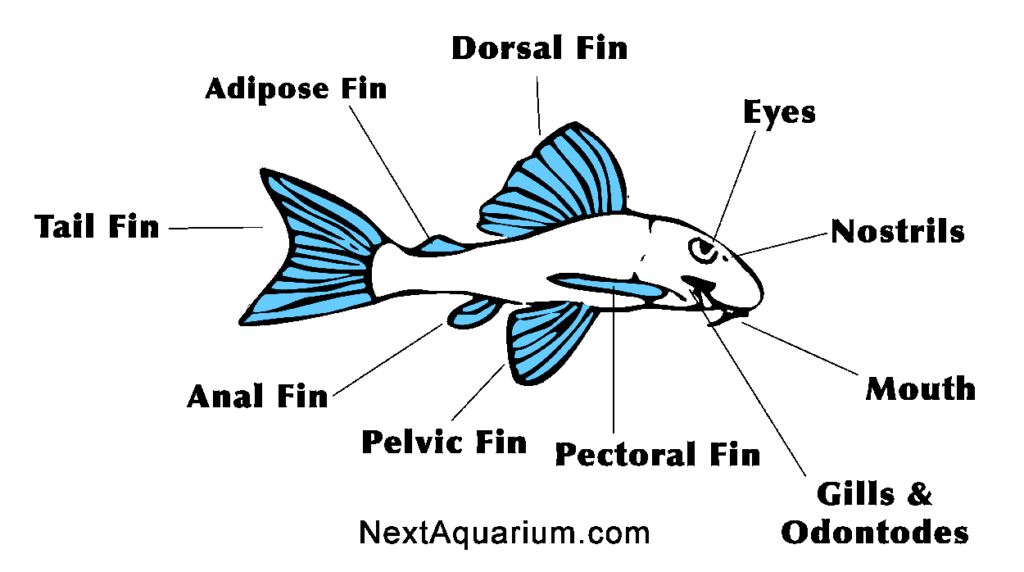
Mega Clown Pleco has pretty simple stripe patterns that are black in color. The patterns cover the entire back of the body and head. Their fins also have these patterns but the belly is usually yellowish without any pattern.
Overall these fish are extremely beautiful and will make a great pet fish that will live for a long time.
Adult Size
Mega Clown Pleco size is about 3 inches in length. This makes them one of the smaller plecos that can live in almost any size tank.This makes them an ideal choice for aquarists who want a small pleco that can live in their tank.
Lifespan
In a well-maintained tank, the L340 Pleco lifespan is between 5 – 8 years. Like most aquarium fish, these fish will live to their expected life only if they get proper care and diet.
Behavior and Temperament
Mega Clown Pleco are generally very passive and dont show any aggressive behaviors. They usually stay in their small territory at the bottom of the tank without paying any attention to fish swimming in the water column.
when you keep more than one pleco fish in your tank, you might see some aggressive behavior. Males are very territorial and might fight over a cave to their death! Females are not territorial and are not as aggressive as males are.
Adding more hiding areas and more pleco caves will prevent aggressive behaviors among males. You should have at least one cave for each male present in your tank. The other way to prevent aggression is to simply keep all females if it’s a possibility to have them sexed.
They are mainly active at night and will prefer to stay in their cave or hiding spot during the day. However, it doesn’t mean that they don’t come out at all during the daytime. When conditions are in their favor of L340, they will come out when it’s day or lights are one.
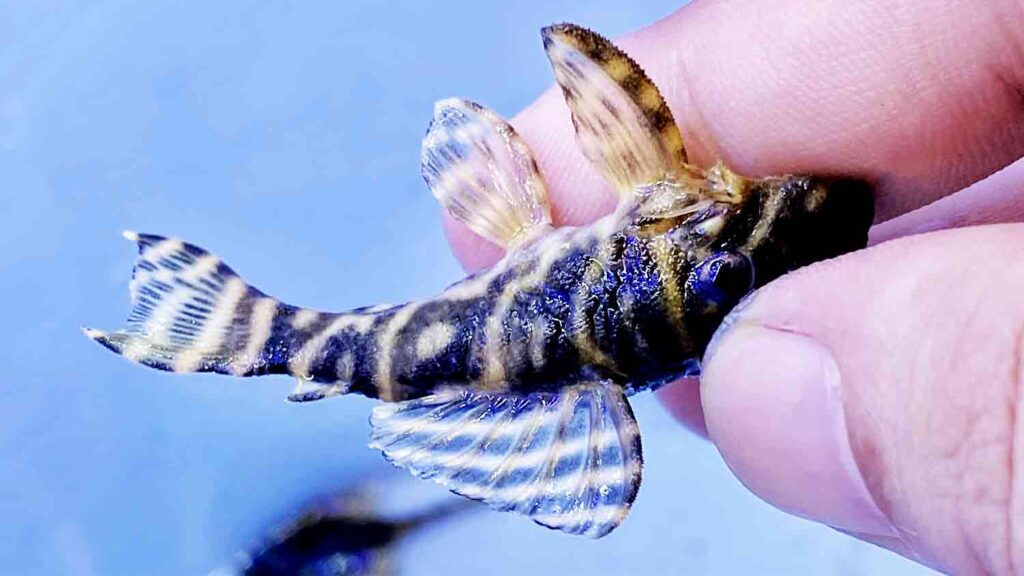
Mega Clown Pleco Care
Mega Clown Pleco Care isn’t challenging or hard. These fish will easily adapt to life in the aquarium when you make a few tweaks to your aquarium.
That said, this hardy fish still needs a special environment to thrive. They have unique care needs and a special diet you will need to know. Clean and warm water as well as a diet that matches what they get in the wild is very important.
For the best living conditions and care for your Mega Clown Pleco, you should follow the basic guidelines listed below.
Tank Size
The minimum tank size for a single Mega Clown Pleco is 20 gallons. This is a manageable size for most hobbyists and easier to maintain.
However, L340 Plecos need more floor area than just water volume. The more surface area you provide them the happier they live. This is especially true when you house more than just one pleco. Bigger aquariums will naturally have a larger bottom area and also they maintain more stable parameters which is a plus point.
To provide more floor area for your Mega Clown Pleco, you should first get a tank that is wide at the base (If possible). Then, you can make even more floor area by adding slates and tiles in the tank in a way that your plecos can swim under and over them. Doing this will provide a lot of surface to the tank and will create hiding spots so your fish can hide.
Tank Setup:
It’s important to tweak the tank setup in favor of your Pleco. You will need to recreate the natural habitat of L340 Pleco in your aquarium. These fish are mainly at the bottom of the tank so you need to pay attention to your substrate and other decorations in the tank.
Mega Clown Pleco needs lots of hiding spots to feel safe in an aquarium environment. You can create these hiding spots by having rocks and driftwoods in the tank. These fish will hide in the shades and crevasses created by the decorations when the light is on or when they don’t feel safe. There are also many pleco caves sold online that are specially manufactured for plecos. These caves provide a dark and secure space for the fish to rest during the daytime.
Their natural habitat has a fine muddy and sandy substrate. In your aquarium, you can add sand as your substrate which recreates a similar environment as this fish gets in the wild. This will protect the soft belly of this fish from getting accidentally injured. You can also use smaller pea gravel substrates, their round and cornerless shape will not harm your fish.
Your aquarium will be more balanced if you add live plants. Simply pick a handful of your favorite plants to make your tank unique as most plants get along nicely with Mega Clown Pleco.
Water Parameters:
In order to keep your Mega Clown Pleco healthy and happy, you will need to simulate their natural habitat in your tank. These fish are hardy and might live in a wider range of parameters but they will only thrive when you match your tank to its natural environment. In the wild, these fish have warm and well-oxygenated waters that have low TDS. Below are the range you can keep L340 Plecos in:
- Temperature: 80 – 86 Degrees Fahrenheit
- PH: 6 – 8
- TDS: 60 – 200 PPM
In order to maintain stability in your tank, we recommend buying a TDS (Total Dissolved Solids) meter along with a test kit. When you first bring your L340 Pleco home you will need to perform regular water tests to make sure water parameters are in favor of your pleco. After a few weeks, once your tank is stable, you will need a TDS meter to determine when you need to perform a water change. Every time your tank’s TDS crosses the ideal range you will need to change the water so the TDS goes back down.

Lighting:
Mega Clown Pleco thrives in the shade, so if you don’t have live plants, avoid using strong lighting. If you keep live plants, however, you can simply add more caves and hiding spots for them to hide while the aquarium lights are on.
Filter System:
Due to the high waste production of Mega Clown Pleco, they require a powerful filter. If your tank’s filtration system cannot keep up with waste production, your fish will suffer and possibly become ill. This will have a direct impact on the lifespan of your fish.
Common Diseases and Prevention
Mega Clown Pleco is one of the hardy fish in the aquarium hobby, however, it lives in a tiny ecosystem called a fish tank. In a small space like an aquarium, diseases will easily and rapidly transfer between the living creatures. While there are no known species-specific diseases for Mega Clown Pleco, these fish are at risk of most known aquarium diseases.
Poor tank care usually leads to bacterial or fungal infections in aquarium fish. But probably the most common way for the fish to get sick is through the introduction of new sick fish or plants that might carry diseases. That said, you should never introduce new fish or plants to your tank without correctly quarantining them. Regular water changes and tank maintenance are also extremely important. Never leave any uneaten food in the tank for a long time as they will start to rot and increase the risks of bacterial or fungal infection.
Diet and Feeding Requirements
Mega Clown Pleco are not picky eaters and will eat almost all types of available fish foods. Even though they eat all types of foods, it doesn’t mean they will thrive with all types of foods. They are carnivores (meat-eaters) and will mainly eat meaty foods. In the wild, they are mainly feeding on insect larvae and small creatures available at the bottom of the rivers.
In captivity, they thrive on a high-protein diet so having several types of protein sources is necessary. For protein, frozen or live foods like bloodworms, tubifex, daphnia, brine shrimp, and other small creatures make great protein sources. The good news is that you can find all of them in your local pet store and online.
There are also many commercially prepared foods available that are specifically made for plecos. When feeding commercially prepared foods, always get multiple different types and feed your fish a mix of all. High-protein fish flakes or pellets mixed with a low amount of high-fiber plant food are a good mix to feed.
The Mega Clown Pleco has a diverse diet in its natural habitat and will need a similar diet in captivity as well. Commercial foods should be the primary diet they receive and live foods can be a snack they get a few times a week. Most fish foods sold in stores only have a few different types of the ingredients plecos eat in the wild. So you will need to feed them a few different mix of sinking foods so they get a balanced diet. Feeding should be done at night and only feed as much as they eat overnight.
Breeding Mega Clown Pleco
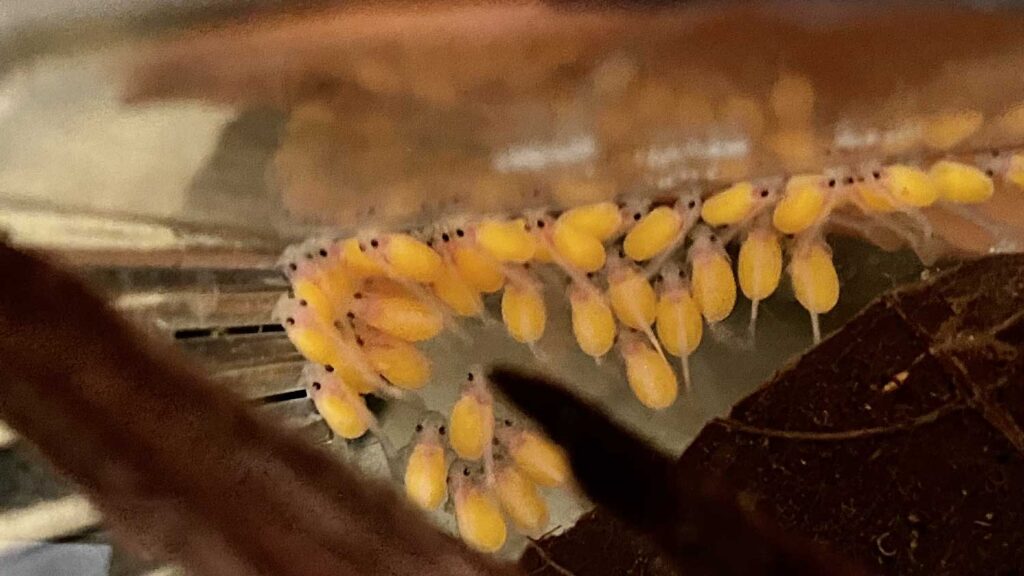
Breeding Mega Clown Pleco is possible in aquariums when the conditions are right. In order to breed these fish, you will need your L340 Pleco to be mature and at least 2-3 years old. Once you confirm you have at least one male and one female in your breeding group, you can start to condition your fish for breeding.
If you have more males in your tank, then make sure that each male has a cave available in the tank for them. The rule of thumb is to add at least one cave per each male if not more.
L340 Pleco are cave breeders which means they need caves to breed. The cave should be slightly bigger than the male’s body; but, small enough that he can trap the female inside.
For breeding purposes, the male looks around for a suitable cave to trap the female in. When the male finds a suitable cave, he will clean it out and wait for the female to arrive. The male will then trap the female and will not let her leave the cave until she lays eggs.
Once eggs are laid, the male will let the female leave the cave, and then he will fertilize the eggs. It’s the male job to guard the eggs until they hatch. During this time, the male cleans the eggs and fans them so the eggs don’t go bad or get mold.
The eggs usually hatch 7-10 days after being laid.
After hatching, the fry usually stay at the back of the cave and feed on their egg sacks for the next few days. The male will keep the fry in the cave for another 7-10 days until they are fully developed and ready to leave.
Once the fry are strong enough, they will escape the cave and will attach to driftwood or glass in the aquarium. The fry usually stays together in a cluster in a single spot until they grow to half an inch in length.
Tank Mates
As long as your community tank has enough bottom surface, Mega Clown Pleco can be a wonderful addition. This fish’s behavior is directly impacted by the tank layout. If you pay close attention to the “Tank Setup” section of this guide, you can safely house multiple fish without any issues. Most South American fish and some other fish that can tolerate tank parameters of L340 Pleco can be great additions.
Any fish that can’t handle the water parameters of the Mega Clown Pleco should be avoided. Most South American fish can make excellent tank mates, however, you will need to avoid large or aggressive fish. Most aggressive or large fish will try to bully your L340 Pleco, and if it fits in their mouth they might even try to eat your pleco. To help get you started, here are some tank mate ideas for Mega Clown Pleco:
- L397 Pleco
- L169 Pleco
- Angelfish
- Leopard Frog Pleco
- Discus
- Guppy Fish
- Dwarf Gourami
- Neon Tetra
- Ember Tetra
- Other Tetras
- Other Plecos
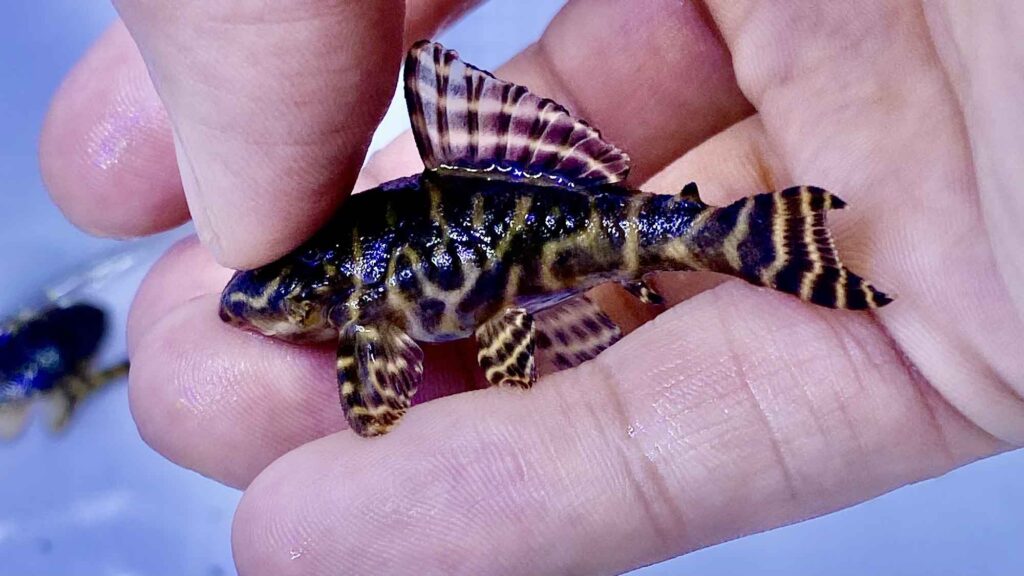
Conclusion
Now that you are familiar with the Mega Clown Pleco care, you can confidently look after your pet pleco. These fish are very calm and won’t bother their aquarium companions which makes them even easier to look after. For maximum growth and health, the L340 Pleco demands a warm, and clean tank. So long as you abide by the recommendations we made in this article, you should not face any problems.